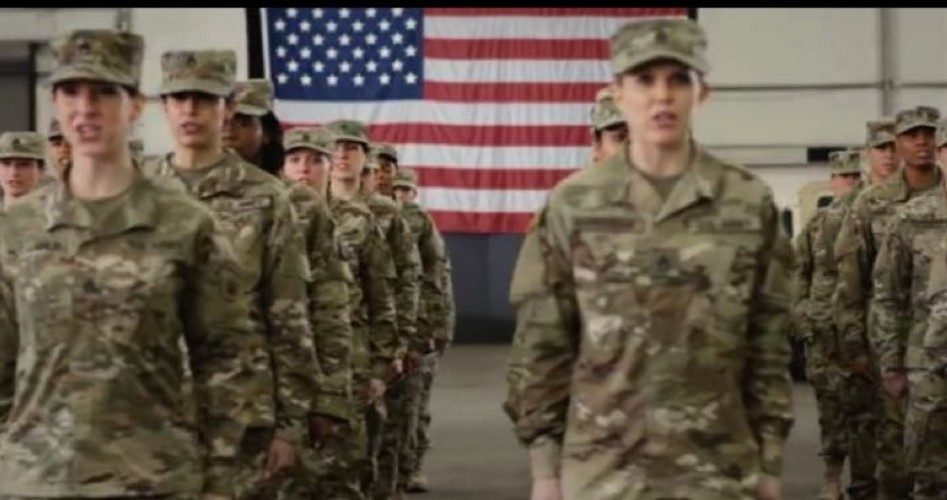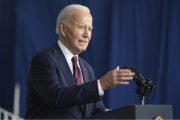
Reversing a move made by President Obama late in his administration, President Donald Trump said July 26 that “transgender” individuals — those who identify with and behave according to the opposite sex — will be banned from serving in the U.S. military.
“After consultation with my Generals and military experts, please be advised that the United States government will not accept or allow transgender individuals to serve in any capacity in the U.S. military,” the president communicated in a series of Twitter posts. “Our military must be focused on decisive and overwhelming victory and cannot be burdened with the tremendous medical costs and disruption that transgender in the military would entail.”
While an Obama administration order had enabled transgender individuals to serve in the armed forces, earlier this month the Defense Department had put a six-month moratorium on further transgender enlistment, even as military branches moved forward with training for how rank-and-file military personnel should treat transgender personnel.
While the move bans further enlistment of transgender individuals, it remains unclear what will happen to the approximately 250 transgender military personnel currently serving. A Pentagon spokesman referred all questions about Trump’s statements to the White House. “We will continue to work closely with the White House to address the new guidance provided by the Commander in Chief on transgender individuals serving the military,” said Navy Capt. Jeff Davis. “We will provide revised guidance to the Department in the near future.”
Addressing the likely medical costs that would result from transgenders in the military, the New York Times reported that Trump had “elected to announce the ban in order to resolve a quietly brewing fight on Capitol Hill over whether taxpayer money should pay for gender transition and hormone therapy for transgender service members. The dispute had threatened to kill a $790 billion defense and security spending package scheduled for a vote this week.”
Among the first to criticize the president’s decision was the American Civil Liberties Union, which called it “outrageous and desperate,” vowing to fight the ban. “Let us be clear,” said ACLU staff attorney Joshua Block. “This has been studied extensively, and the consensus is clear: There are no cost or military readiness drawbacks associated with allowing trans people to fight for their country. The president is trying to score cheap political points on the backs of military personnel who have put their lives on the line for their country.”
Similarly, U.S. Representative Dan Kildee (D-Mich.) vice chair of the congressional LGBT caucus, said the decision amounted to a “slap in the face to the thousands of transgender Americans already serving in the military,” and said it “undermines our military’s readiness.” Kildee added that “anyone who is willing to put on the uniform of the United States and risk their life in service to our country should be celebrated as patriots, regardless of their gender identity. This short-sighted and discriminatory policy will make America less safe.”
House Minority Leader Nancy Pelosi (D-Calif.) called Trump’s decision a “cruel and arbitrary decision,” and recalled that “on this very day in 1948, President Harry Truman signed the executive order desegregating the U.S. military. Sixty-nine years later, President Trump has chosen this day to unleash a vile and hateful agenda that will blindside thousands of patriotic Americans already serving with honor and bravery.”
Even Senator John McCain, a celebrated Vietnam POW and chairman of the Senate Armed Services Committee, added his own criticism concerning the announcement, insisting that all Americans should be allowed to serve in the military. “There is no reason to force service members who are able to fight, train, and deploy to leave the military — regardless of their gender identity,” he said.
But Representative Vicky Hartzler (R-Mo.), who had introduced a failed amendment to the defense budget that would have banned transgenders from the military, said that “President Trump’s decision today to rescind Obama’s transgender military policy has the best interests of the military in mind, and I thank him for taking this decisive action.”
Marine Corps veteran Tony Perkins of the Family Research Council (FRC), which has been a leading voice against allowing transgenders in the military, applauded the president “for keeping his promise to return to military priorities, and not continue the social experimentation of the Obama era that has crippled our nation’s military. The military can now focus its efforts on preparing to fight and win wars rather than being used to advance the Obama social agenda.”
Similarly, Lt. Col. Robert Maginnis (U.S. Army, Ret.), the FRC’s senior fellow for national security, speculated that “the president obviously has been consulting with the top leaders in the Pentagon, who are grounded in common sense, and they made recommendations to end it. So the president has decided to not go down that path that the Obama administration paved regarding political correctness.”
Looking at the issue in relation to long-held military requirements for recruits, the ban was logical. The military has long sought Americans who fit a “military mold,” so to speak, who won’t cause needless disruptions or cause needless money to be spent. For instance, the U.S. military excludes those without at least a high-school equivalency degree, those with tatoos on the fingers, neck, or face or “ear gauges,” those Americans on ADHD medication or insulin, those who have a felony conviction, and those who are overweight. Many Americans who are specifically excluded could, as senator John McCain said, “fight, train, and deploy.” Trangenders are just one of many groups that aren’t deemed good military material.
Image: Screenshot of a U.S Army video



